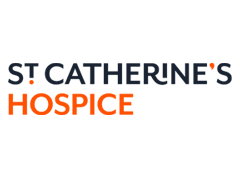The algorithm that scores page speed for Google, also known as Lighthouse Performance Score, is changing again with the upcoming release of Lighthouse 6.
What is Google Lighthouse?
Google Lighthouse is an open-source project run by Google Chrome. It is arguably the most popular free performance analysis tool. You can run it against any webpage to audit load times, accessibility and search engine optimisation of web pages. Currently, your site is scored on 5 variables – and this will soon to change to 6.
The score is useful to show a positive impact from SEO work, and to give companies an idea of areas that need improvement.
How Page Speed Affects Rankings
Google uses page speed as a ranking factor, so any changes to the way page speed is calculated, (aka modifications to the algorithm), will have an impact on anyone who relies on the Lighthouse Performance Scoring as a benchmark. Here are some significant changes to the algorithm in the past:
In March of 2018, indexing became based on the mobile version of a page, rather than desktop, which means that the speed of your site on mobile affects your overall SEO ranking.
In July of 2018, the SEO ranking algorithm was updated to include page speed as a ranking factor for both mobile pages and ads. This means if your pages load slowly, it will reduce your ad quality score, and ads will cost more.
In May of 2019, the algorithm was updated to incorporate field data provided by the Chrome User Experience Report (CrUX).
The new toolset reported in several categories including:
- Field Data which used the CrUX to show you the First Contentful Paint (FCP) and the First Input Delay (FID).
- Lab Data, an analysis of the current page on an emulated mobile and plotted metrics from that tool including First Contentful Paint, Speed Index, Time to Interactive, First Meaningful Paint, First CPU Idle, Estimated Input Latency and then shows screenshots of how this is viewed.
- Opportunities showed you ways to improve the performance of that specific page including the areas of issues and how much they are slowing down your page.
- Diagnostics gave you a report on the performance of your application for things like caching, DOM size, payloads, JavaScript and much more.
- Finally Audit, a report showing you how well you did on various audits including Minify JavaScript, CSS, redirects and so much more
The new Lighthouse 6 is the first major release since May 2019.
Lighthouse 6 changes to the scoring algorithm
The most significant change coming with Lighthouse 6 is the reshuffle of its scoring algorithm that calculates page speed/performance score.
Previously measured on 5 metrics, Lighthouse 6 will now use 6 metrics. Largest Contentful Paint and Total Blocking Time will replace First Meaningful Paint and First CPU Idle. One more new metric is also added – Cumulative Layout Shift.
As you can see, the weighting for each metric has also changed. This has been done to put a bigger emphasis on the metrics that focus on user experience:
|
Lighthouse 5 scoring metrics and their weight |
Lighthouse 6 scoring metrics and their weight |
|
First Contentful Paint (20%) |
First Contentful Paint (15% ⬇️) |
|
Time to Interactive (33.3%) |
Time to Interactive (15% ⬇️) |
|
Speed Index (26.7%) |
Speed Index (15% ⬇️) |
|
First Meaningful Paint (6.7%) |
Largest Contentful Paint (25% ⬆️) |
|
First CPU Idle (13.3%) |
Total Blocking Time (25% ⬆️) |
|
– |
Cumulative Layout Shift (5% ⬆️) |
Understanding these changes in metrics and scoring will keep you prepared for any changes you may see in your reporting. Here’s a great resource for understanding the new metrics.











